UX design is a field where creativity and innovation are extremely important. Despite the existence of certain rules and principles, when it comes to product and service design, the field is always open to new ideas. It is one of the reasons that UI/UX design is a simple yet complicated business. As in all creative industries, there are certain times when the professionals are in a slump, struggling to find a way out of the block. Similarly, there can be instances where designers need the inspiration to add value to their design and to return to appreciate the value of their work. This article is one such source of inspiration and motivation for all UI/UX designers. We’ve curated some of the best quotes to help you find the best motivation. Read along as we share some of the gems with you.
UI/UX design is a field highly focused on real-world problems with the aim to provide a useful, helpful, and meaningful experience to the users. According to the Nielsen Norman Group, it is a process that takes a holistic approach, covering all the interactions of a user with a product, service, and/or organization. The focus of UI/UX design is to make the lives of users easier. Designers cannot, however, add value to the field if they’re not enjoying the process themselves. A UI/UX professional, therefore, needs motivation at times and to be reminded of the basic principles of the field and the value of a designer in the world.
The following quotes serve the exact same purpose, making the daily tasks of designers easier and more fun, as they improve the lives of users one design at a time.
UX Design Quotes
UX design is open to all sorts of ideas and interpretations. It is for this reason that there are numerous explanations of the concept itself. An academic researcher might define design differently than that of a professional UX design agency, depending on the use and application of the ideas.
Danielle Sacks about "Design covers everything"
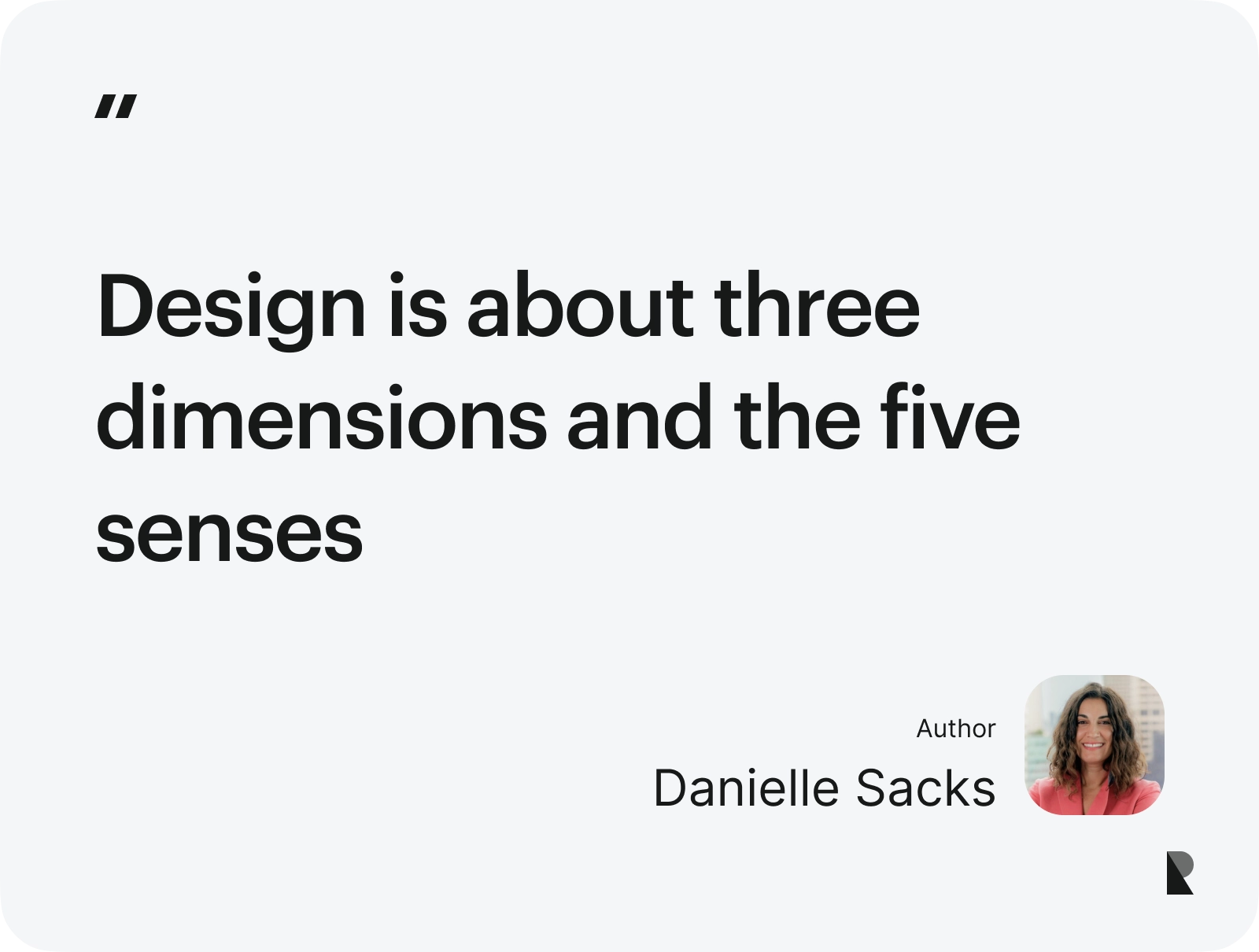
It is often said that design takes a holistic approach. Danielle Sacks says it all in these few words. UI/UX designers have to give due attention to the process of design, by focusing on all the aspects. They should not focus on a single design feature and look, instead, at the entire product or service. UI/UX professionals, when conducting research and creating interactive designs, need to bring all their senses to attention, making sure that no details get missed. This will ensure that the design is complete and usable in every possible way and that the users can benefit from it in the real world.
Aza Raskin about constraints in design
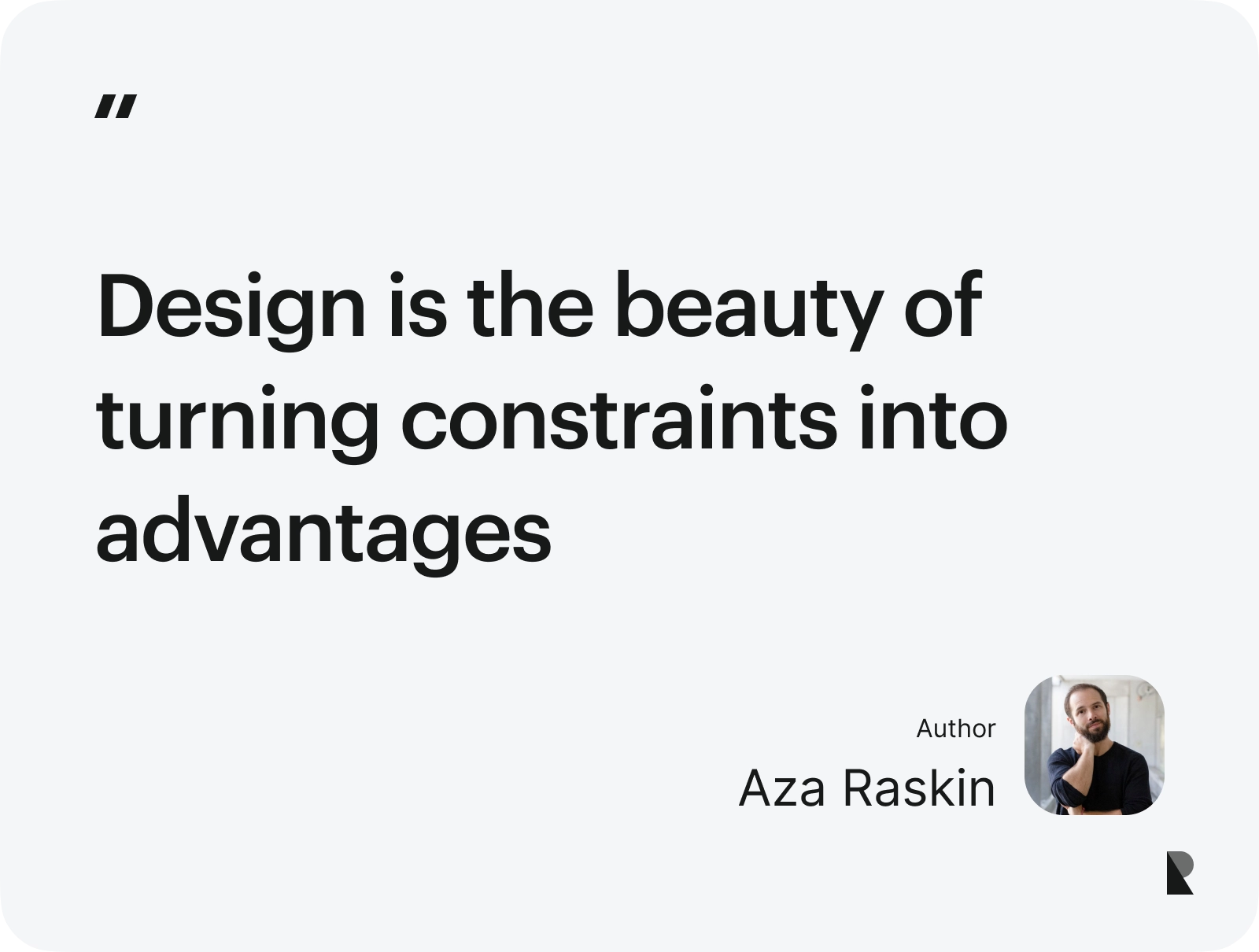
Designers are often found struggling with limitations, hurdles, and a variety of constraints. This is where these words by Aza Raskin can be of immense help. One of the most interesting aspects of the discipline is to make sure that the constraints do not hamper the performance of a product or service. Even if there are constraints, the users should either not notice them or be provided with an alternative way to accomplish their goals. Designers, therefore, are the masters at making the most out of such limiting factors.
Bob Baxley about design solves problems
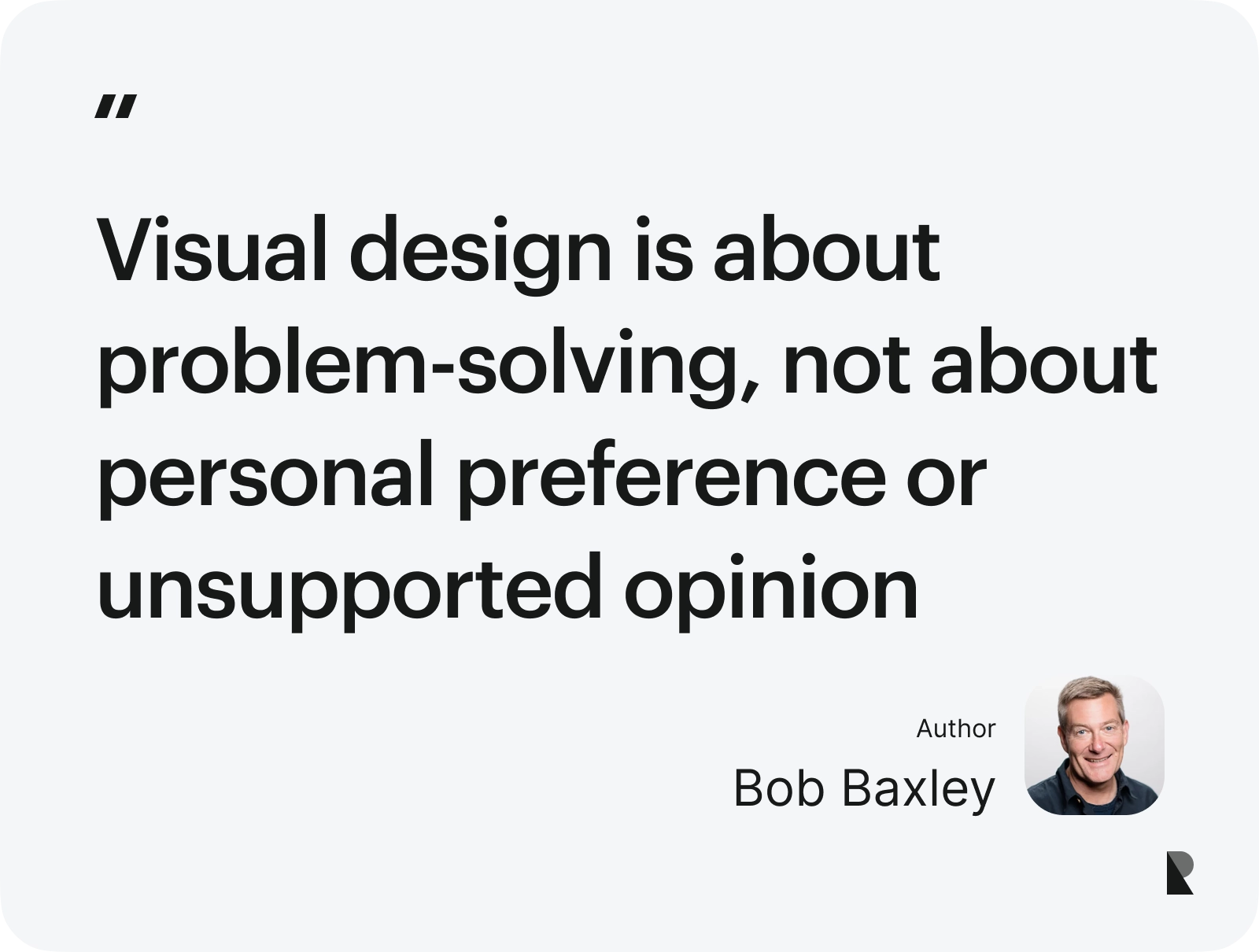
UI/UX designers are researchers, practitioners, and, most importantly, problem-solvers. The practice of UX research and design demands that personal biases and unauthentic claims be left aside. The focus, instead, should be on making the lives of users easier, better, pleasurable, and more fruitful. This only happens when designers give precedence to the needs and concerns of users over their personal interests and opinions. Bob Baxley makes a very valid point which is essential for every UI/UX designer before starting any project or even thinking about one.
Paul Rand about design is simple
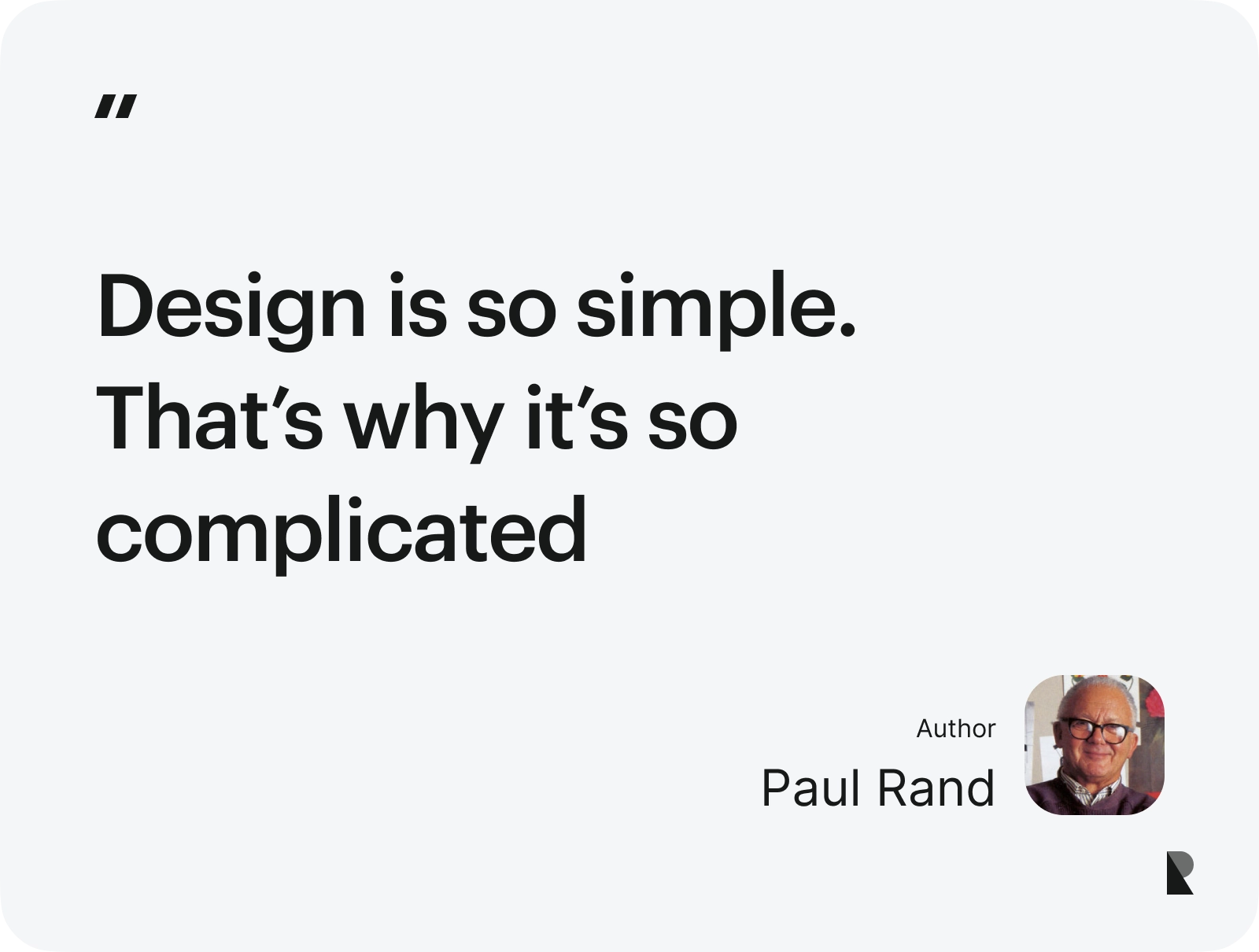
Paul Rand, a revolutionary designer, sums the entire philosophy of UI/UX design in this single quote. Designers aim to create products and services that are simple and easy to use. The human brain, however, seldom looks at the obvious and unambiguous solutions. A UI/UX designer, therefore, has to go think out of the box to make things simpler before, during, and after the design is completed. It is this unorthodox approach to problem-solving that makes the whole design process complicated to understand and implement. It is, however, what the discipline demands and must, therefore, be respected in all cases.
Aspiring designers often wonder about the characteristics of a good design. The question cannot, however, be answered in a simple or straightforward manner. The quality of a design varies on its application, industry, audience, and utility. Take a look at the following UX quotes to get inspired and create better designs.
Massimo Vignelli about design and style
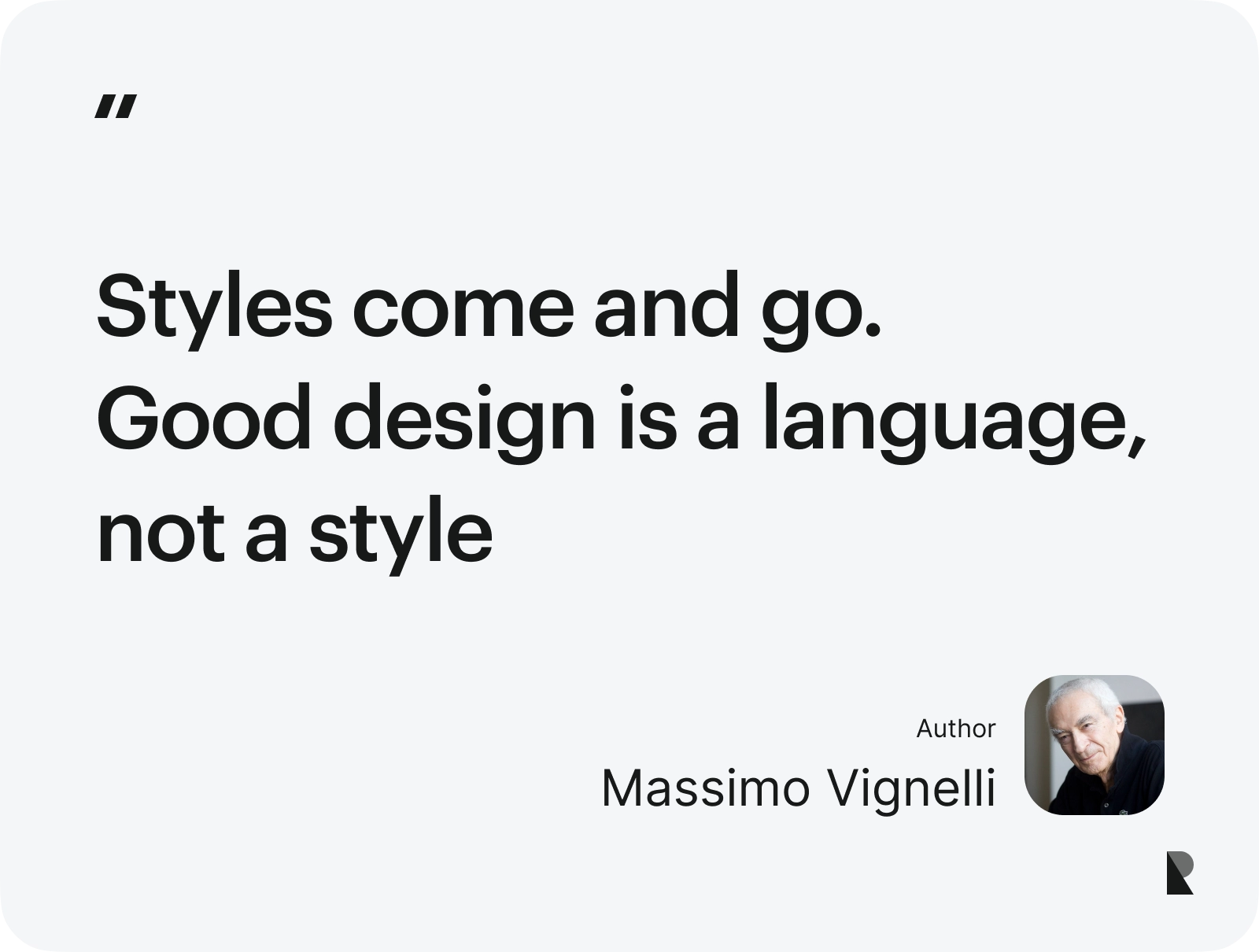
The value of good design is not limited to a single product or service. This also means that a good design is not entirely about uniqueness and stylistic factors. A product can be really unique and full of new features but if it is not useful and/or usable, the design is never going to succeed. People use a certain product and keep coming back to it, not just because it looks nice but because it makes them perform their tasks with ease and efficiency. This is why good design always ranks higher than style.
Leonardo Da Vinci about simplicity is the key
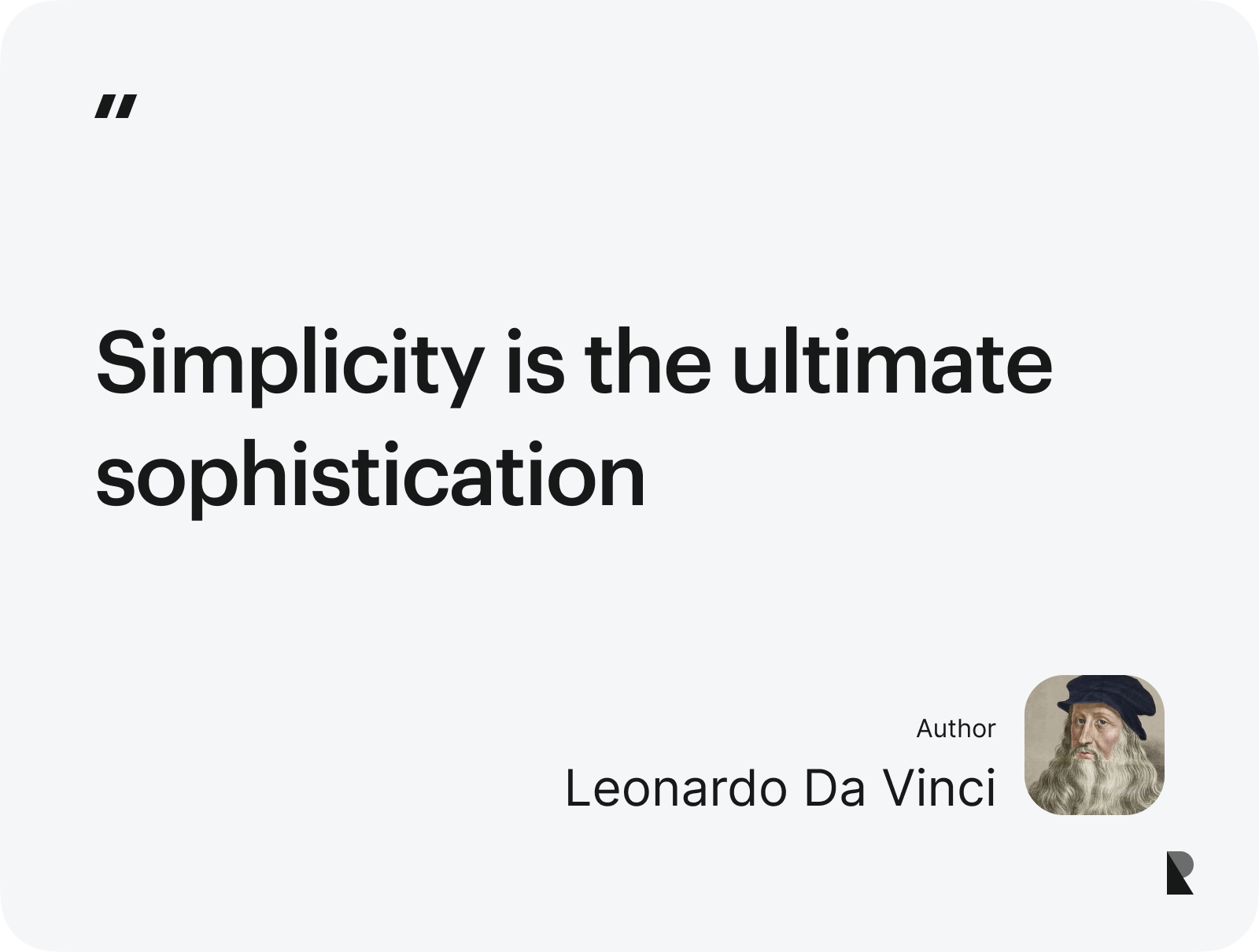
One of the finest artists and designers of all time, Leonardo Da Vinci, states the basic yet the most important aspect of a good design: simplicity. New designers might think of this as a bad rule but if you look from the perspective of users, simplicity always wins.
Imagine if you’re using a mobile application and are unable to perform the simplest of tasks, such as log in or access the settings, you’re bound to feel frustrated and, ultimately, leave the application for good, finding a better alternative instead. That is because the information, due to complexity, is buried so deep that you cannot even find, let alone use, it. A design, therefore, should focus on making the entire experience intuitive, simple, and free of unnecessary complications.
Jared Sinclair about process of design
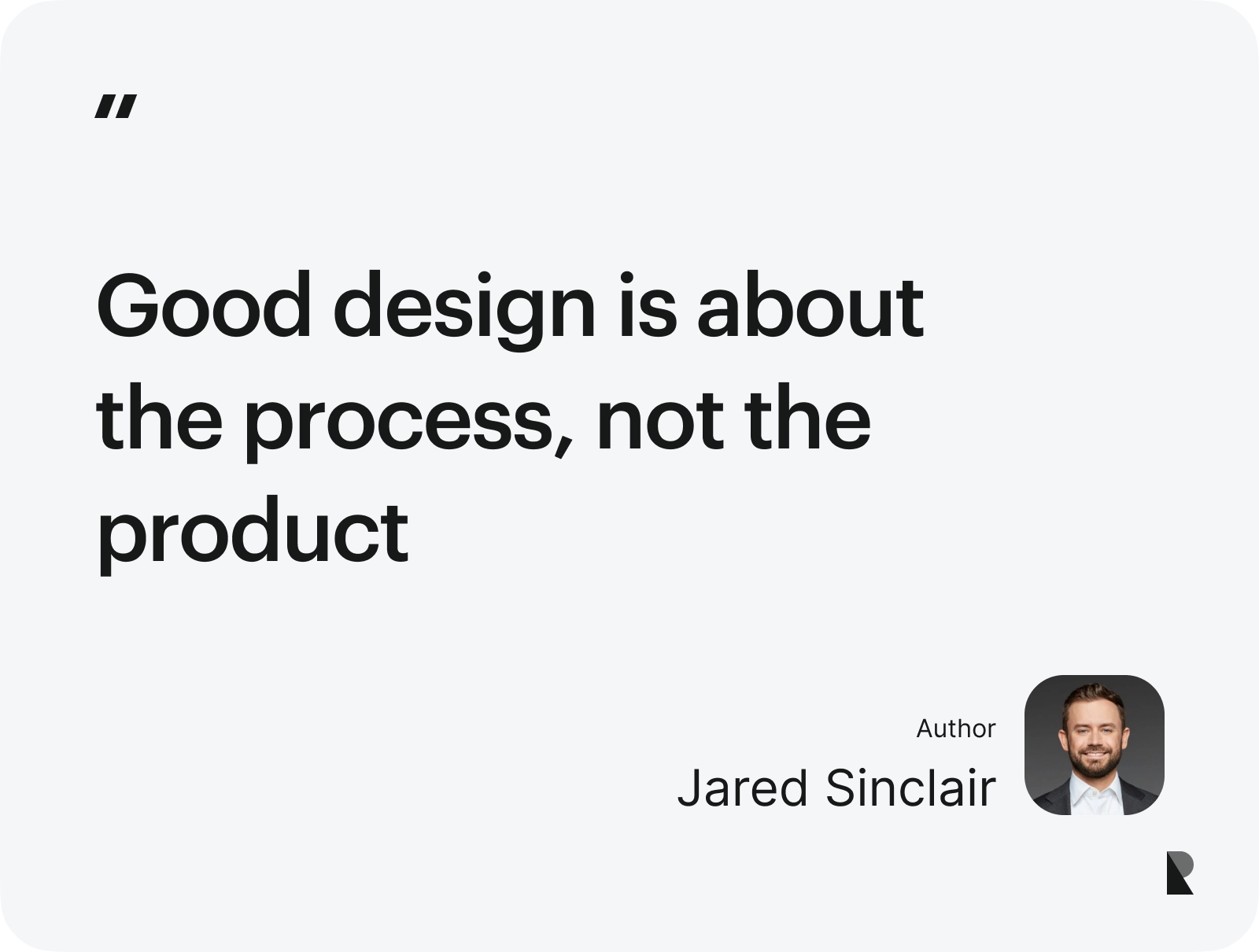
It is important to understand that good design covers all the interactions of a user with a product or service. Similarly, to make a design better, a designer’s eye is not merely focused on the end product, instead, he/she makes the entire design process valuable and fruitful.
The end product is bound to be good and user-friendly if the process followed for its creation is effective. Design thinking, therefore, is one of the most effective strategies employed by UI/UX designers. This way, the users are made an active part of product development, thus ensuring better performance in the real world.
A designer needs to understand and empathize with his/her users. At the end of the day, the aim of any design is to facilitate the users. If a designer does not understand the users, he/she will never be able to create a useful and usable product or service. Following are some of the user experience quotes that can help clarify the importance of users in the design process.
Dieter Rams about understanding people
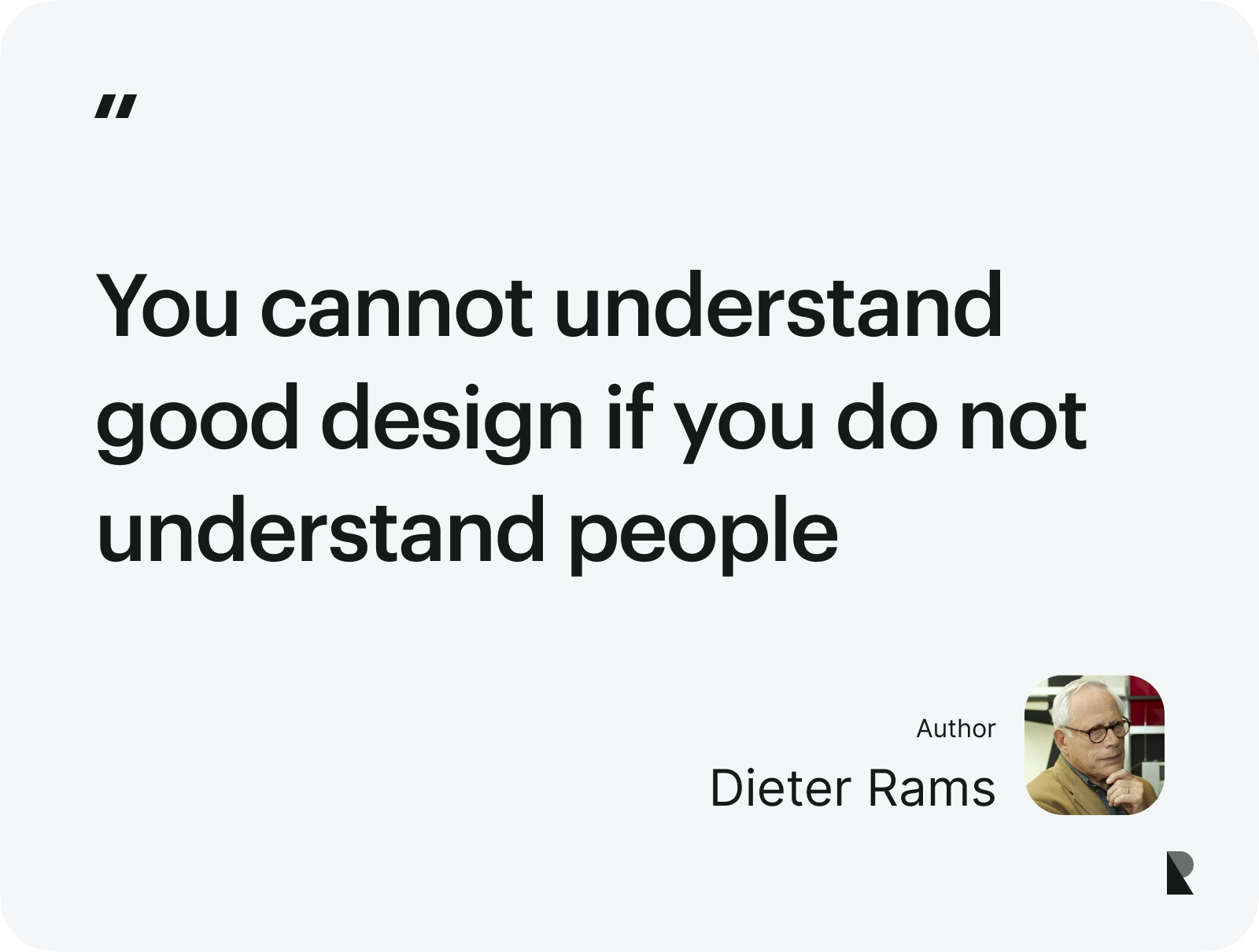
A designer must always keep the users in mind. It should be noted that being a designer, there’s a high chance that you will not end up using the product or service that you’re creating. Your biases, concerns, and preferences, therefore, do not take precedence over the needs of the users. If you can understand the needs of users, you can address them more efficiently, designing a product that will bring value to the lives of users and your business alike.
Jakob Nielsen about actions not words
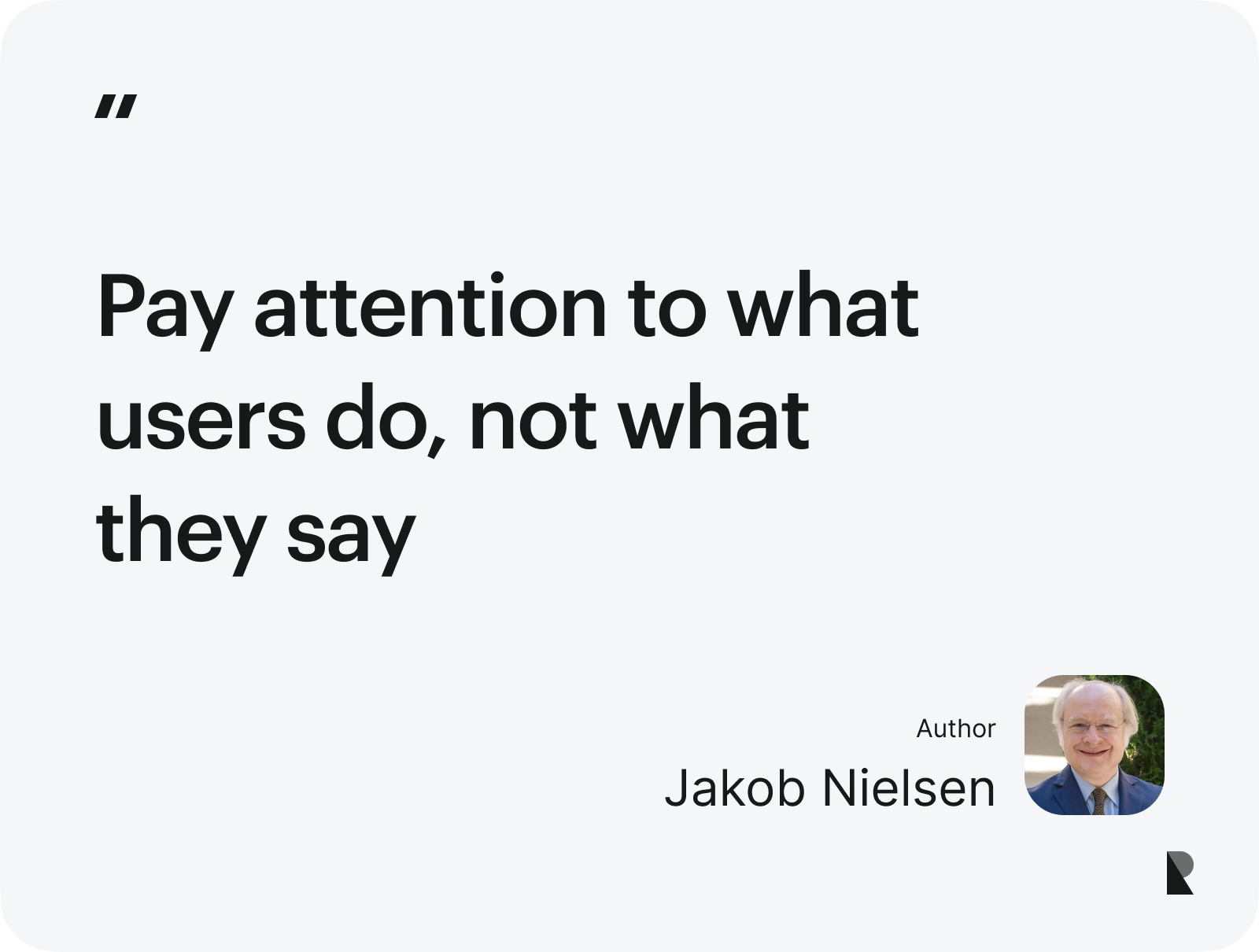
Getting verbal feedback from users, in the form of surveys and interviews, is important for designers. What is more important, however, is the way users act. Jakob Nielsen rightly says that a designer should focus more on the way users act while interacting with a product. This is where usability testing comes into play. While conducting a usability test, designers carefully observe the users and understand their struggles. This helps in creating useful designs, meeting the needs of the audience.
Steve Krug about usability is about people
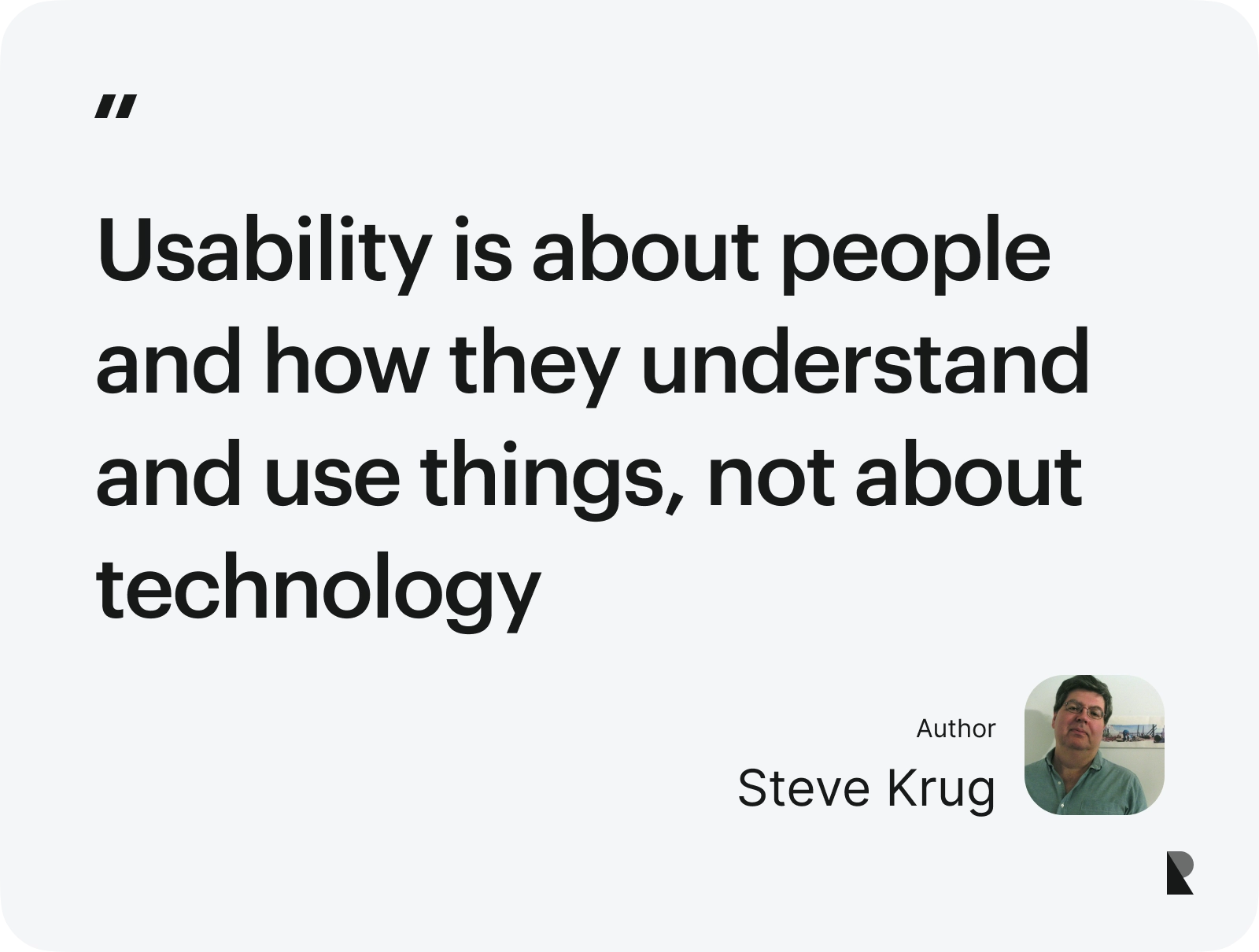
Steve Krug, one of the pioneers of usability and user experience design, advises all aspiring designers to think and care about the users. His famous book, “Don’t Make Me Think”, encourages designers to prioritize users, save the time and effort invested by the audience, and, thus, improve their designs. Thinking about the users, and not the machines, is one of the best ways to make designs more human-centered. If a designer puts technology first, he/she will never be able to help users, which can have a negative impact on the overall design process.
Bill Buxton about user experience
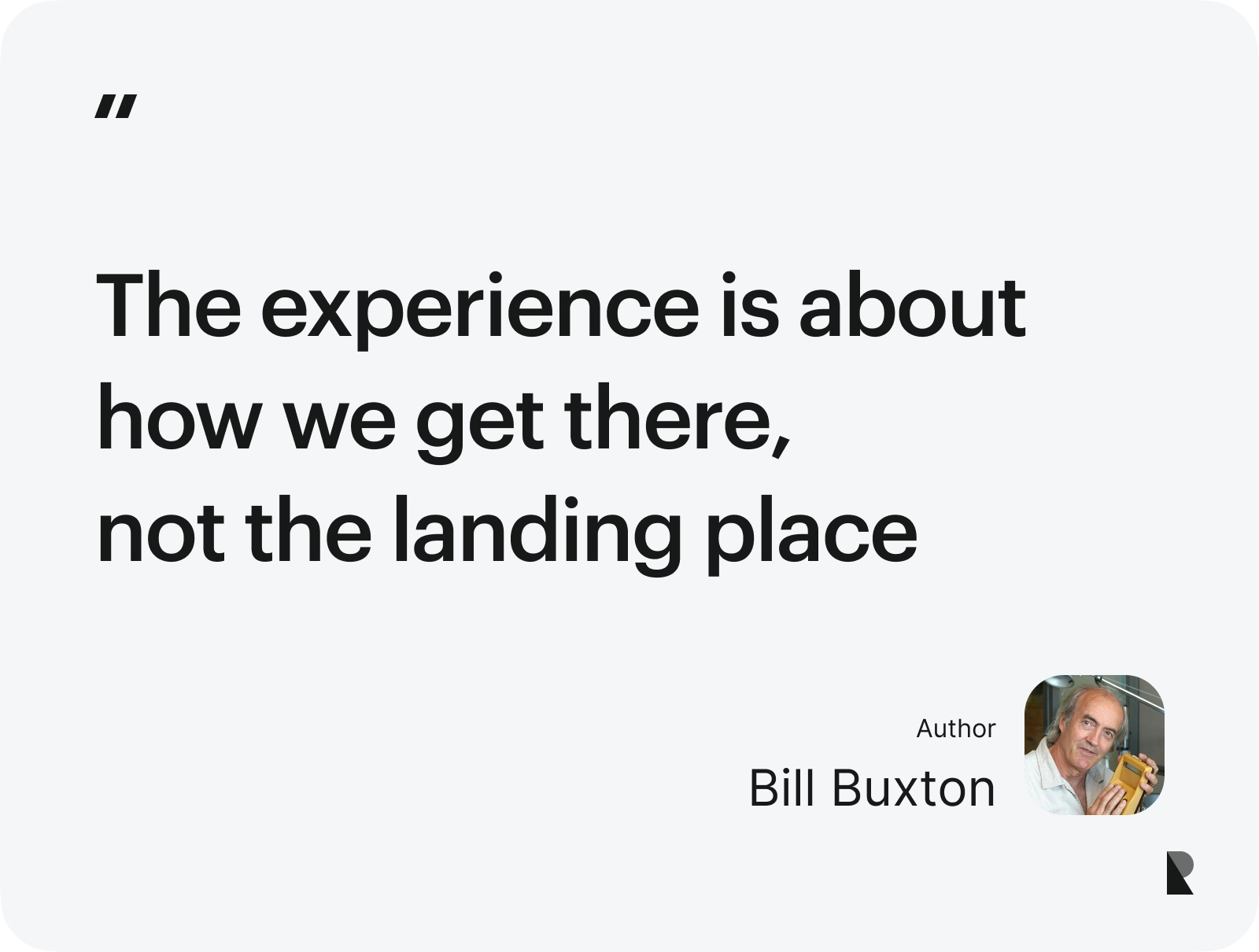
A UI/UX designer can never neglect the holistic approach to design. It is this approach that brings the journey of users to light, giving valuable information to the designers. The entire experience is not focused on a single instant or interaction of a user with the product or service. The experience, instead, starts way before the user actually interacts with a design and leaves a lasting impression. The journey of users, therefore, must be understood and made fruitful. At every instant, users need some feedback or incentive that can bring them a step closer to the product or service.
There are, indeed, certain standards for design – including tested methods, streamlined processes, and proven practices. Some of the best researchers and professionals have shared their thoughts on the approach a designer can take to add value to his/her work. The following usability quotes can serve as inspiration.
Peter Morville about design the right thing
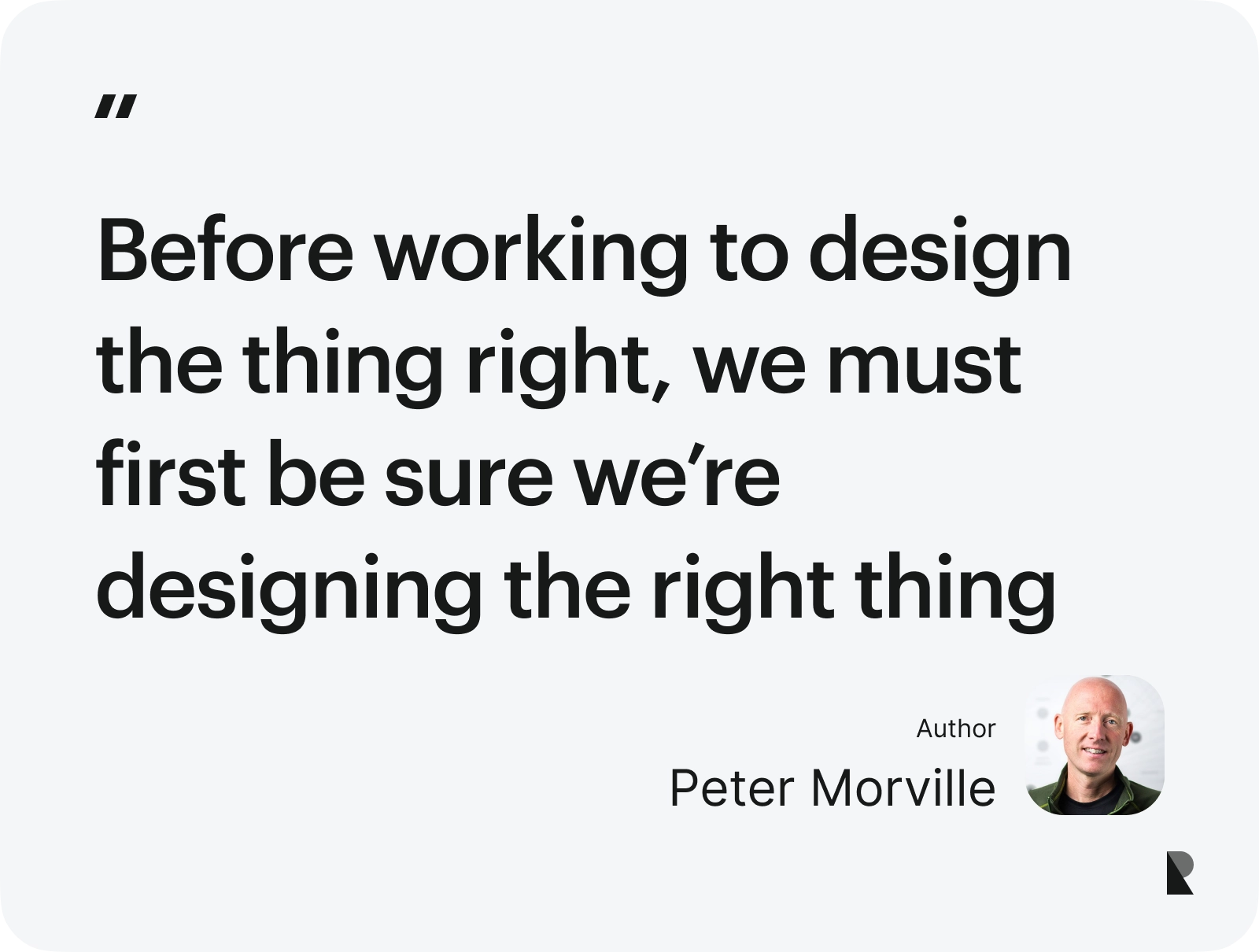
UI/UX design is all about the right approach. Designers want to help the users by providing them with the right information at the right time through the right channels. It is, however, important to conduct some research and analysis before getting your hands dirty with the actual design processes.
As Peter Morville rightly points out that before you even think about designing a product effectively and efficiently, you need to be sure that you’re designing the right product. This is achieved by conducting user and market research. Once a designer is sure that the product being designed is right, he/she can then create a better design, implementing the processes in a more knowledgeable manner.
Don Norman about How people behave
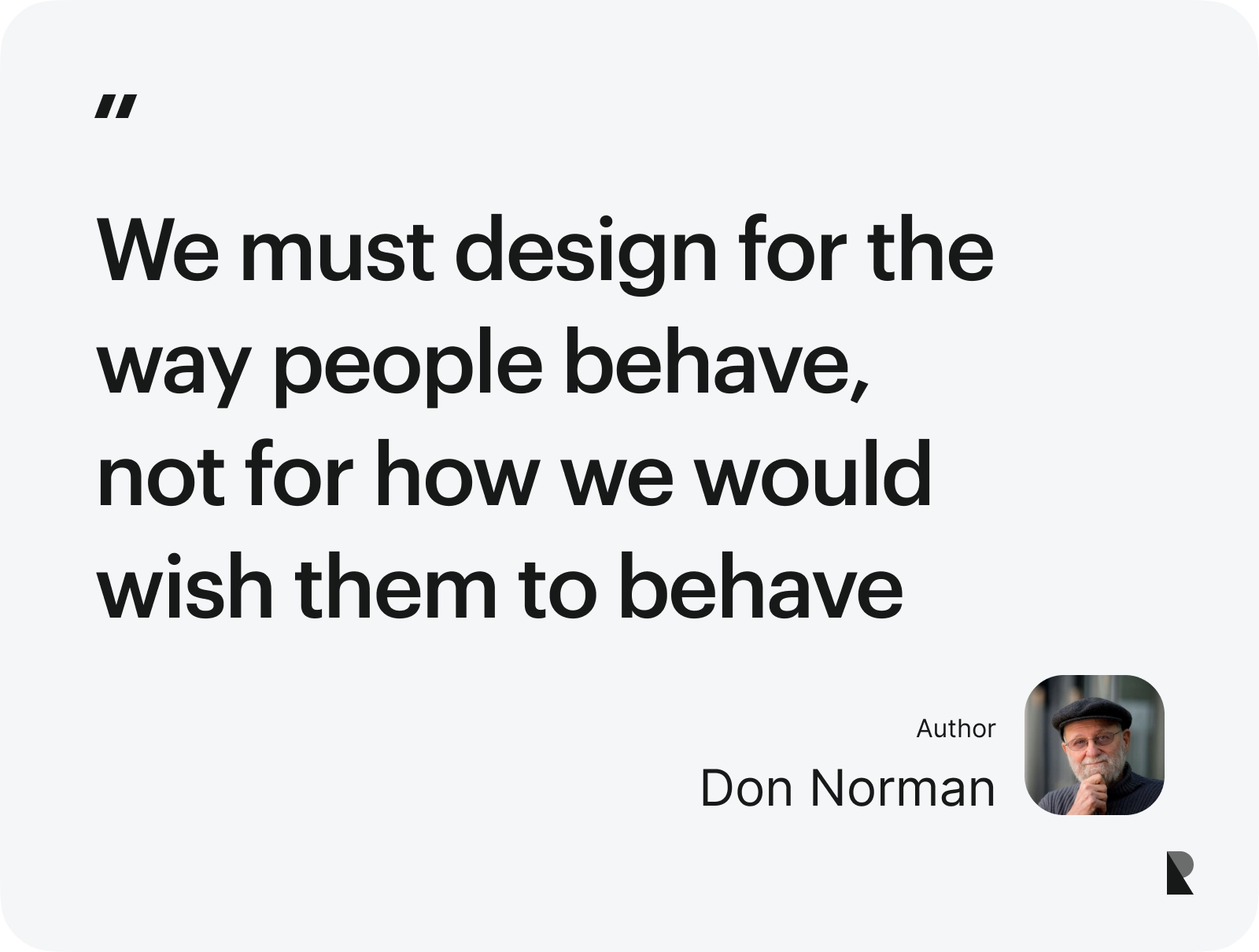
Adding to the practice of observing people while conducting usability tests, it is important to then design around the actions, attitudes, and behaviors of people. The data gathered through feedback and user testing should not be wasted. Don Norman’s UX quote, in reality, sums up the entire practice of interaction and experience design. If a design is focused on the tasks the users have to perform and the way they behave, it will, indeed, be beneficial in the real world.
Bruce Lee about reducing design
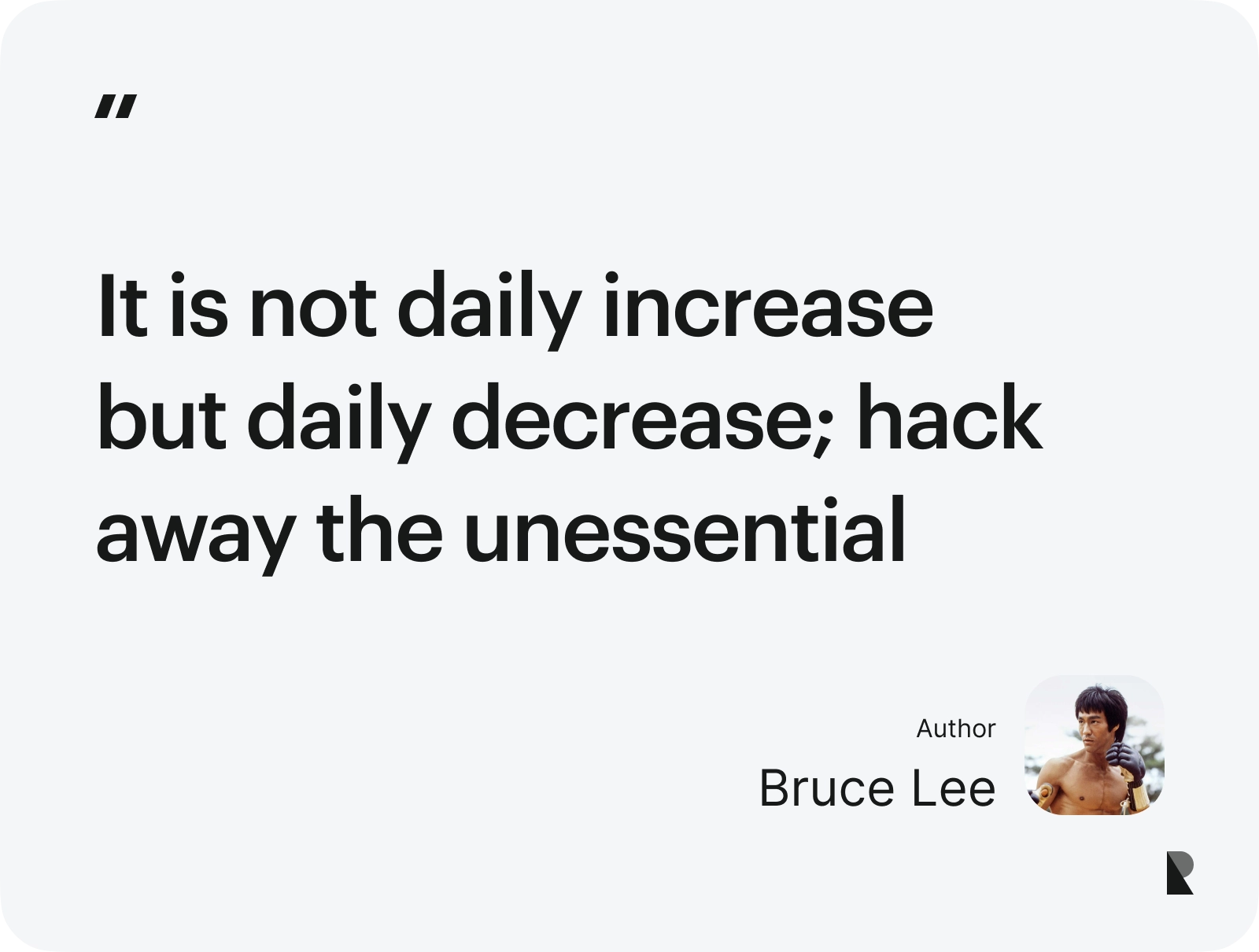
Bruce Lee may not be the first person to come to mind when talking about the design industry. Sometimes, inspiration comes from sources beyond our expectations. Reduction in design is, undoubtedly, one of the finest design principles. If a designer clutters his/her design by providing a lot of features and complicated paths to accomplish a goal, the users will be overwhelmed and frustrated, thus leaving the design altogether. If a single click or a single image can perform the required task, why burden the users with multiple clicks and paragraphs loaded with content?
The leading UI/UX designers look at the profession in a variety of unique ways. From bringing innovative ideas to life to the urge of helping people, designers do it all. A designer should never think that his/her line of work is not valuable. Life without good design practices will be frustrating, to say the least. Some of the leading designers share their thoughts and experiences in the following UX design quotes.
Jonathan Ive about solving complicated problems
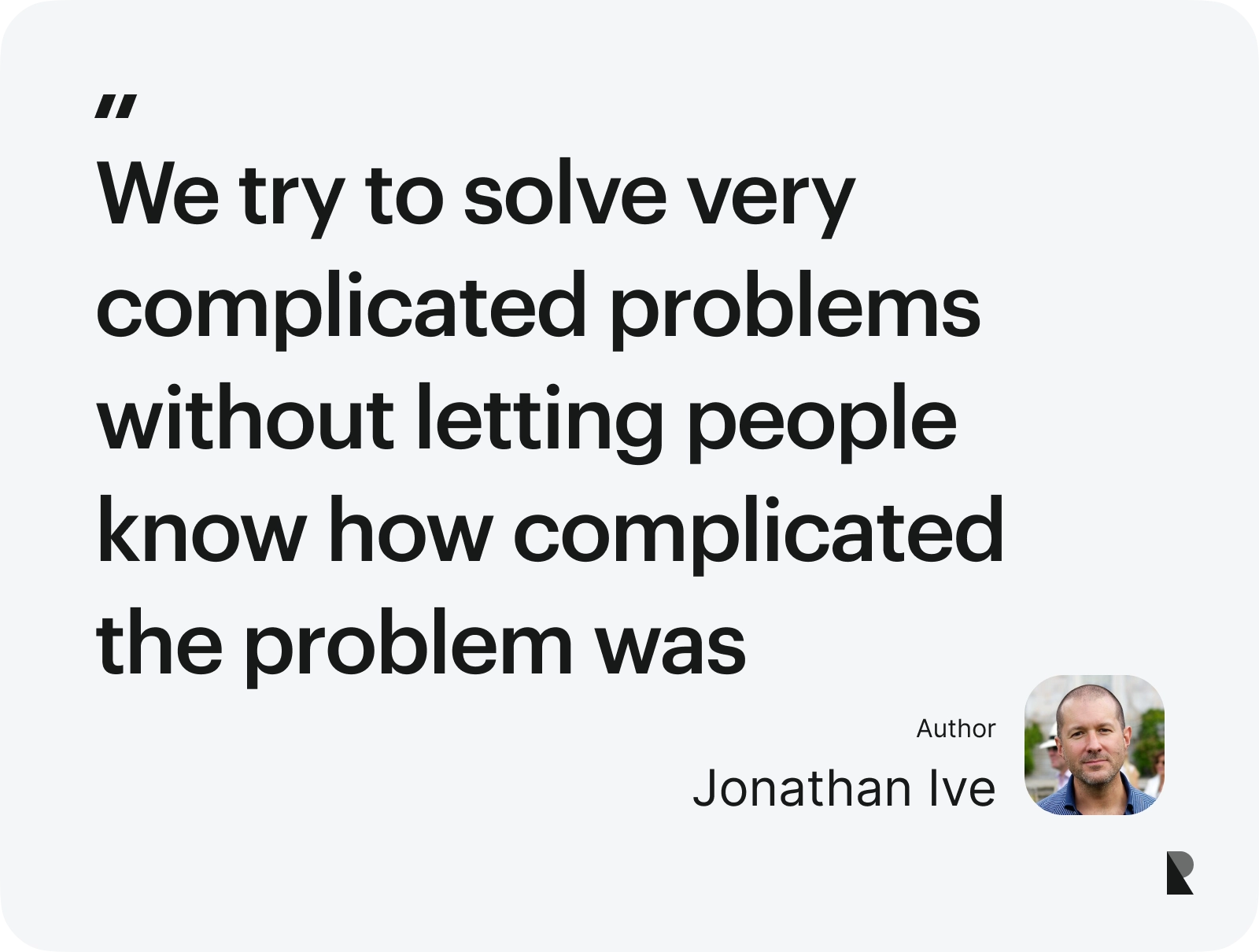
UI/UX designers always have a problem-solving attitude. They deal with and resolve complicated issues on a daily basis. The tricky part of the role, however, is what Jonathan Ive states in his famous quote: to not bother the users with these complications. No matter how difficult a problem is, a designer tries to make it look easy to the users so that they either do not notice the existence of such an issue in the first place or are able to deal with it with minimum effort.
Scott Belsky about Making ideas happen
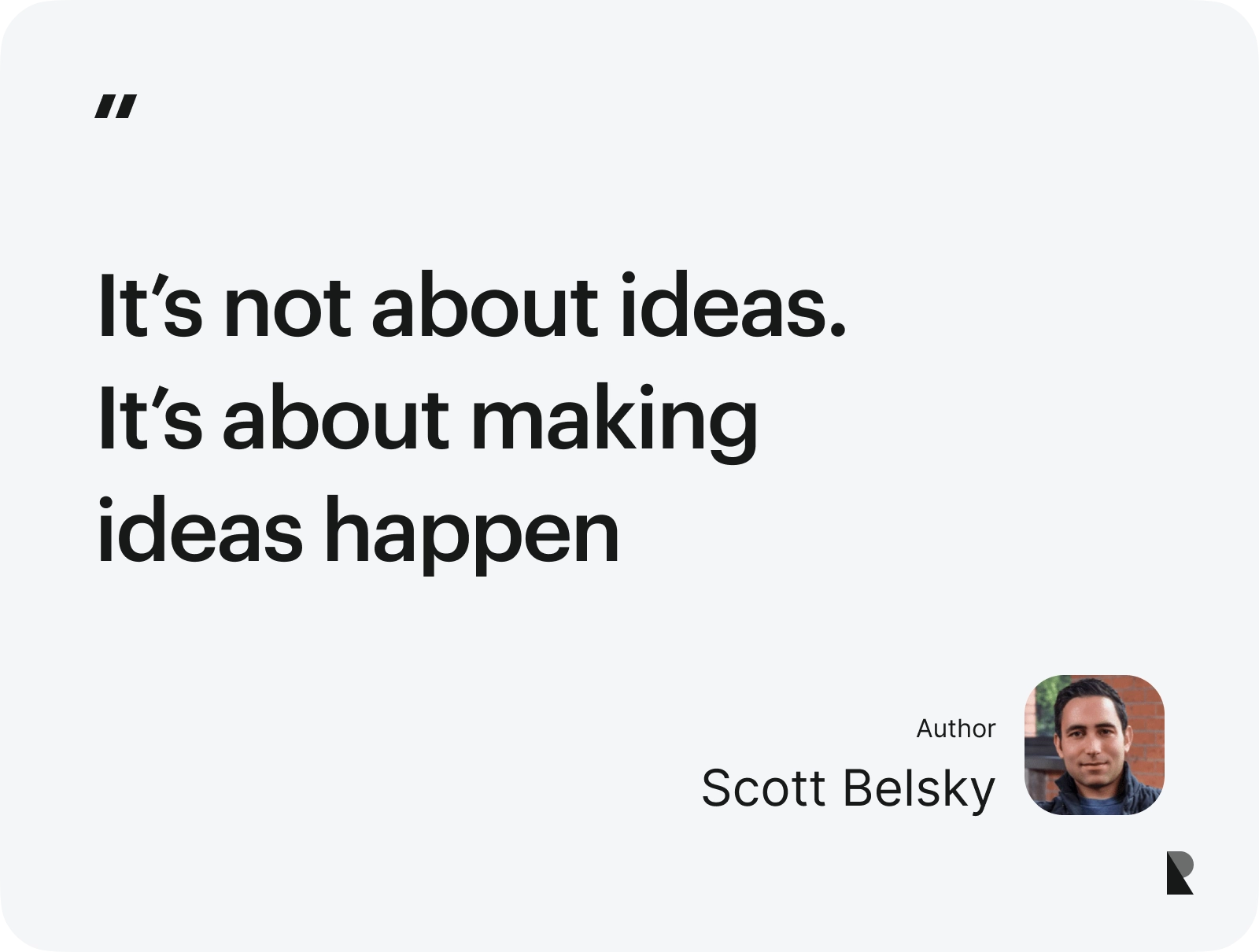
Scott Belsky, the founder of Behance, is of the opinion that UI/UX designers are not just creative thinkers. The scope of this field is more practical where the designers have to, first, think out of the box and bring innovative solutions to the table, and then bring their ideas to life. A designer, therefore, does not live in a world of ideas but he/she has a more practical approach to the formation and implementation of these ideas. UI/UX designers are multi-talented and highly-skilled individuals and this is one of the many reasons that their demand in the market is increasing at a rapid pace.
Lindon Leader about simplicity and clarity
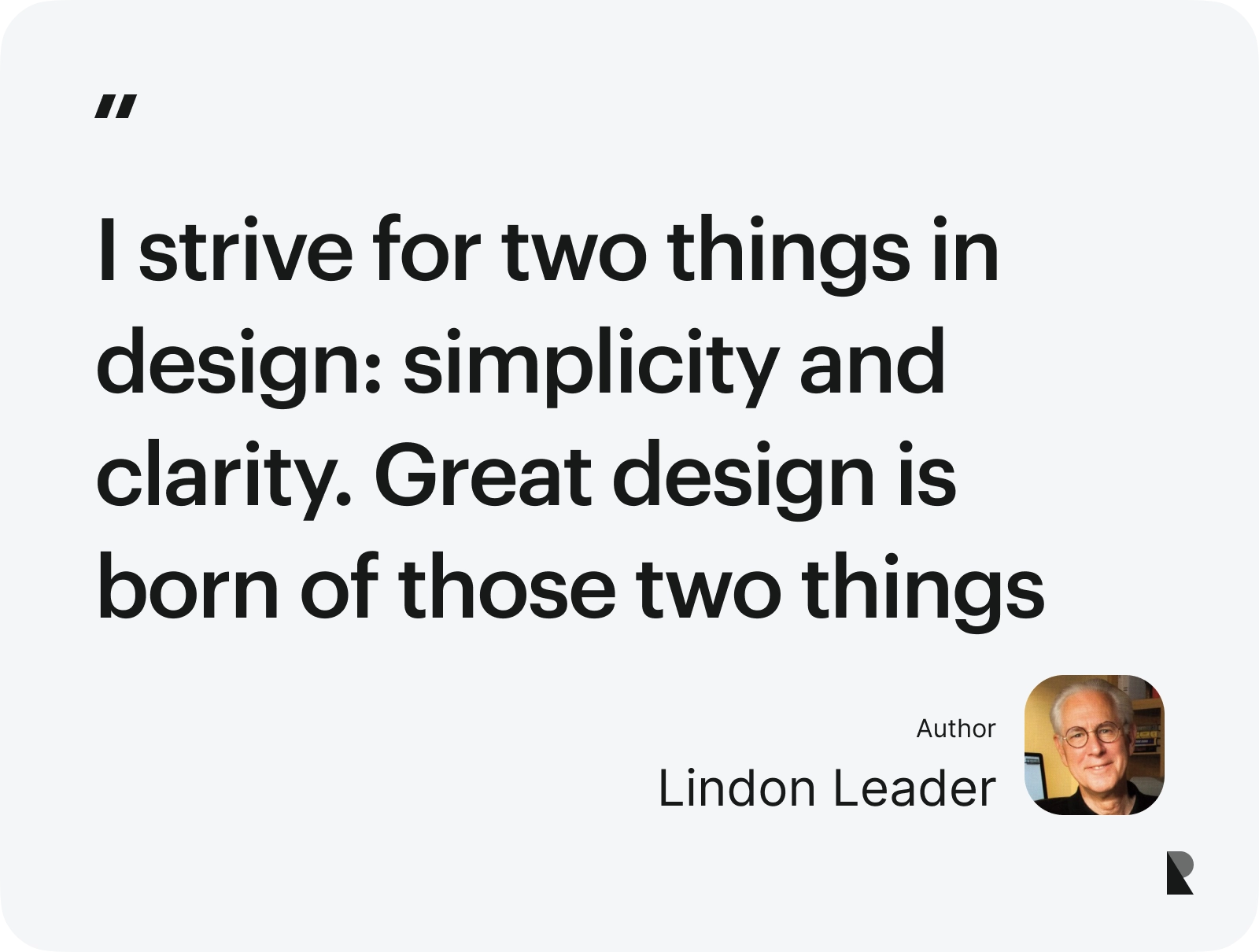
Lindon Leader, the brilliant designer who created the FedEx logo, narrates a golden rule for design in one of his famous quotes. The two aspects that a designer always needs to focus on are simplicity and clarity in design. If the final product or service is not easy to understand and use, and if it does not provide clear solutions to complex problems, then the design is not serving its purpose. An aspiring designer should, therefore, always focus on the principle of clarity along with simplicity to make his/her designs useful, usable, and helpful.
Aaron Walter about not just be usable
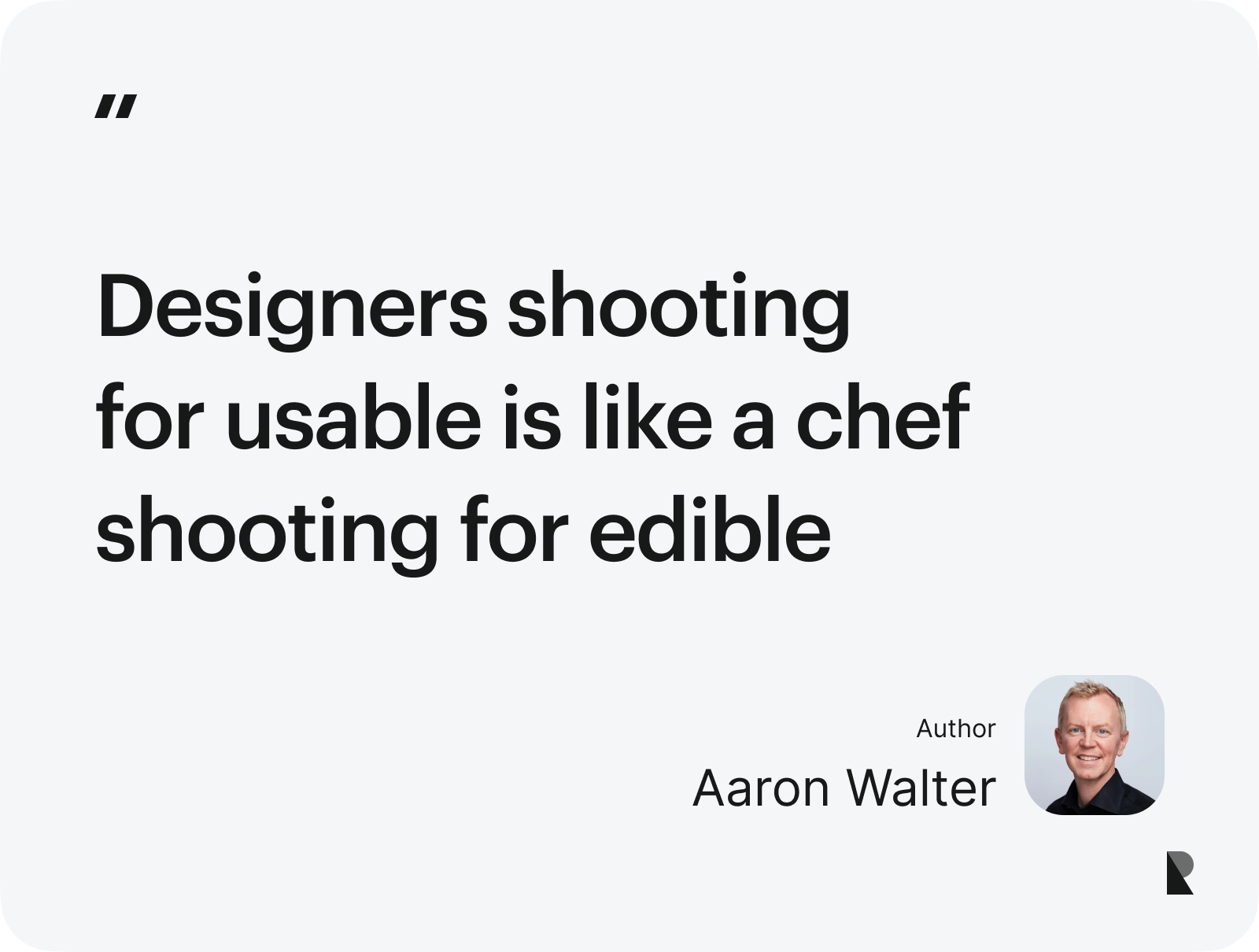
UI/UX designers always tend to aim high. The goal of any design project is not merely to provide a product or service that works. That, in the world of design, counts as a low aim and is never appreciated. As Aaron Walter sums it up quite nicely, it is equivalent to saying that the food you get at a fancy restaurant is just edible. That is definitely not what you want. If you only wanted edible food, you could’ve cooked it yourself or visited a more affordable place. The reason that you need designers is that you want the best user experience. Most designs work without any major roadblocks but if a design gives a valuable experience, that is what compels the users to keep coming back.
Conclusion
UI/UX design is a discipline that encourages innovation and creativity, as long as the overall user experience and the needs of the audience are not compromised. It is a field that is most open to new ideas and suggestions, thus attracting the most creative minds all over the world. Even the most remarkable of designers, however, can face certain blocks in their creative process. This is where these quotes can cheer you up, emphasize the importance of your work, and bring you closer to your next big solution.
There are tons of inspirational quotes, talks, and blog posts on the internet which you, as a designer, can keep going back to from time to time. These valuable resources serve both as an inspiration and a motivation in times when you need to think out of the box. So, let’s seek inspiration, help the users, and make the world a better place, one design at a time.
Jul 29, 2021
